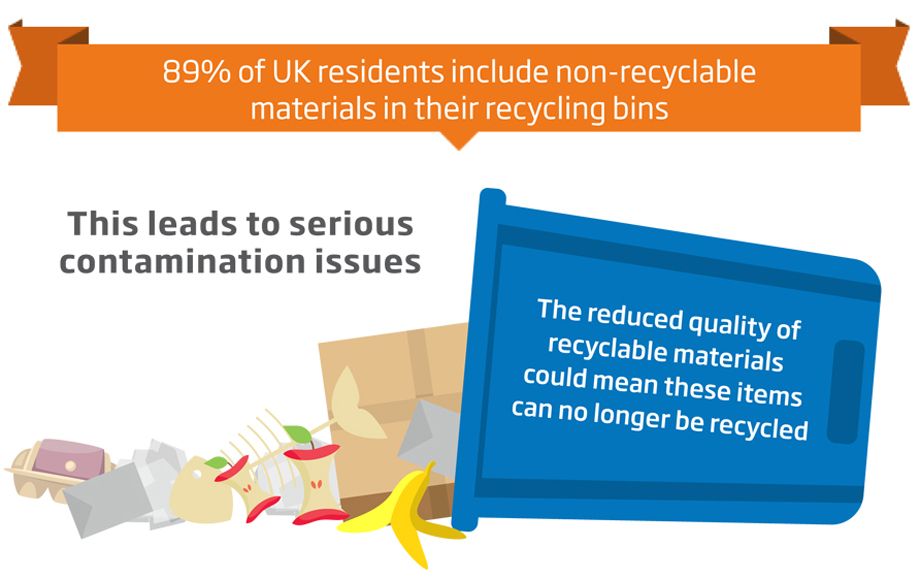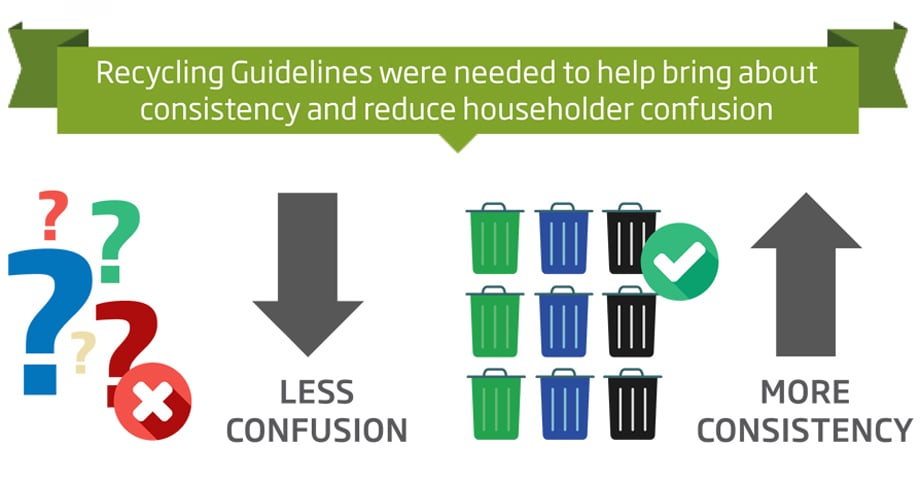Guidelines for better quality recycling
We have recently seen, from within the recycling industry, some good initiatives that can help improve the quality of material that is presented for recycling. As always, initiatives and things such as legislative developments, work best when we all work together; as waste producers, waste managers, recyclers, consumers and residents.
The key for better quality materials for recycling is ensuring that recycling is clean of contamination. At DS Smith we have always maintained that this is best done by collecting certain materials, paper and card being the main ones for us, separately. As such we have continually championed separate collections since the implementation of the Waste Framework Directive.
That is why back in September we welcomed WRAP’s Greater Consistency Framework and its focus on the benefits of clean, high-quality paper and card for recycling. We are interested to see how the framework will be implemented across England, as the economic and environmental case for greater consistency is compelling.

We also welcome WRAP’s new recycling guidelines to tackle confusion in UK households around what items can and cannot be recycled. Recycling has to be made easy, and communication around recycling has to be clear and consistent. In short recycling made easy with clear, concise and consistent communications gives us the best chance of increasing both recycling rates and the quality of recycling. We, as consumers and residents, want to do the right thing, but we need the recycling industry and all its stakeholders to provide the framework that makes it easy for us to do so. If we get the right framework then not only will we recycle, but we will recycle more, and we will recycle better – as we will be safe in the knowledge that we are doing the right thing for our local and wider environment.
So here is a startling fact; across all materials, excluding cartons, up to 89% of residents are including items in the recycling which are not currently recyclable. Such a high percentage presents recyclers with a serious contamination issue, and that means that materials meant for recycling risk not being recycled at all. That is when us as residents get really upset, when we perceive that materials we separated out for recycling end up in waste-to-energy plants or, even worse, landfill sites.

Recently we attended the annual Local Authority Recycling Advisory Committee event, and spoke around the theme of ‘recycling your residents will love’ – recycling made easy for residents, providing quality materials for recyclers to reprocess, and therefore ensuring materials intended for recycling actually ends up in recycling.
At DS Smith we can work with our waste producers, waste managers and our own operations to help the drive to quality recycling. But it’s not just about our customers and the material that we handle. It is vitally important that all stakeholders come together to help create the framework and environment that facilitates maximum recycling levels and quality. And as one former Prime Minister once said, the key is ‘Education, Education, Education’.
With that in mind WRAP’s recycling guidelines have been developed with local authorities, waste management companies and reprocessors, the guidelines cover paper, card, mixed paper and card, plastic bottles, mixed plastic packaging, glass containers, metal packaging, cartons and food waste.
The guidelines have been developed to help bring about consistency and reduce householder confusion in recycling. Consumer testing revealed a low level of awareness amongst consumers of many items that are currently not recyclable and highlighted a number of items that are often not recycled due to a lack of knowledge or confusion.

The guidelines cover:
- What items can and cannot be collected for recycling
- Contaminants that are often included
- How the materials should be presented, i.e. lids on/off
- Reasons why certain items cannot be accepted or should be presented in a certain way
- Items that should never be included in a recycling collection
- Materials mistakenly included in recycling, i.e. dirty/stained paper, greetings cards with glitter on them, sticky papers
By adopting these guidelines and sharing them across the recycling ‘supply cycle’, we can all recognise a series of potential benefits. At the very least they provide a framework for a more consistent approach to how local authorities communicate with residents. Better and more consistent communications, in turn, will lead to less contamination and better quality recycling. Remember the earlier statistic telling us that up to 89% of residents ‘contaminate’ recycling streams – we can attribute a significant part of this to education and communication. WRAPS’s guidelines can help us reduce this, and also capture more of the materials that we can recycle.
There are also clear financial improvements that the guidelines can help to create. Higher levels of quality recycling, and subsequent lower levels of contamination, will not only help to reduce collection and reprocessing costs, they can also provide increased value opportunities – the better the quality, the more valuable the commodity. It’s simple economics. And finally, improved quality recycling will be more resilient to well documented fluctuations in a global market for secondary raw materials.
At DS Smith we collect paper and card to be used at our paper mills in the UK and beyond. Reels of recycled paper from our paper mills are used in our packaging plants to create finished packaging products. We have a vested interest in the quality of paper and card that we collect for recycling. So let’s take a look at what the guidelines say about paper and card on a practical level.
Paper
Yes please
Please remember:
|
No thanks
|
Card
Yes pleaseAll card from around the home, including:
|
No thanks
|
Mixed paper and card
Yes pleasePaper:
Please remember:
All card from around the home, including:
|
No thanks – put these in your general rubbish:
|
N.B these guidelines are for materials commonly collected at kerbside rather than ‘on the go’ therefore do not include coffee cups or sandwich boxes.